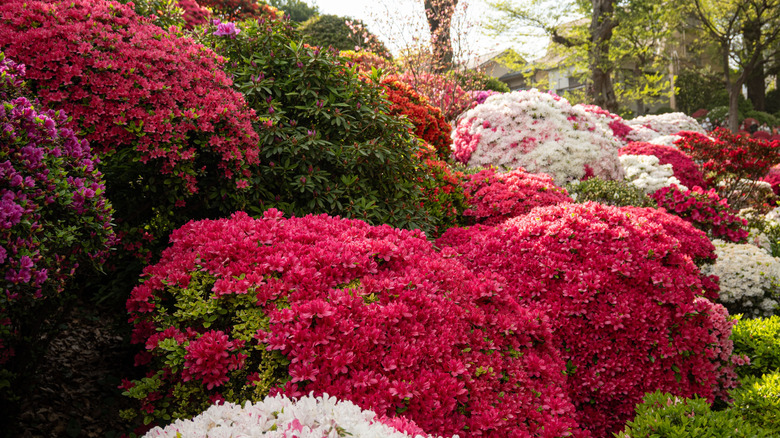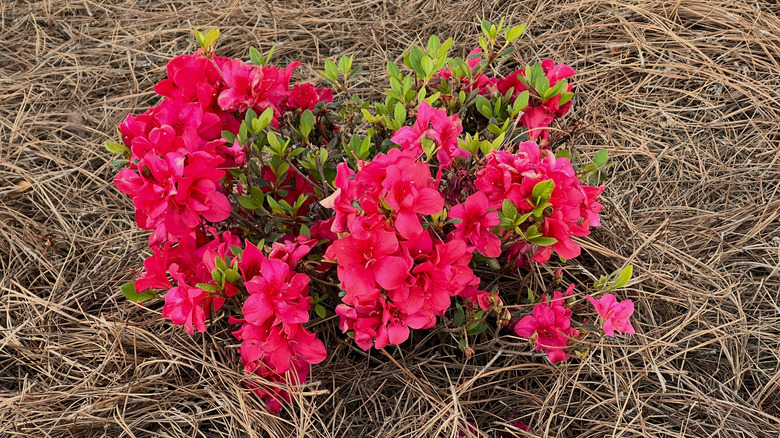Why You Should Always Use Pine Straw When Mulching Your Azaleas
Who doesn't love a healthy and thriving azalea in full bloom? When covered with a sea of colorful flowers, azaleas are at their very best and will almost take your breath away with their beauty. However, it does take a little bit of care and effort to ensure that your plants are happy, healthy, and full of vibrancy. As a general guide, azaleas need well-drained soil that's on the acidic side, protection from the afternoon sun, adequate moisture during dry spells, and limited fertilizer. This is why azaleas and gardenias are a perfect pair in the garden. To that end, there's a good reason you should always use pine straw when mulching azaleas: It will help maintain the lower soil pH that these plants need to flourish.
These stunning ornamental plants are known to love growing under pine trees, so it would make sense that pine straw would make the perfect mulch. Unlike pine bark, pine straw is made up of needles, which are actually the trees' leaves. When used as a mulch, they break down in a similar way to other types of leaves and help enrich the soil in a natural way, without disturbing the nutrient balance. Although pine needles help acidify the top layer of the soil they're on, they won't lower the pH of the soil too much. This means that if you have already amended the soil before planting the azaleas, adding pine straw shouldn't be a problem. As you'll see below, this type of mulch also benefits your azaleas in several other ways.
How pine straw benefits your azaleas
Apart from maintaining desirable soil pH levels, pine straw keeps the moisture in the soil from evaporating and helps the ground retain a consistent temperature. These effects protect azaleas' shallow roots from overheating in the summer or suffering cold damage in the winter. Pine straw is also quite good at discouraging weed growth, which saves you the work of having to pull them out. Best of all, if you have pine trees growing in the yard, pine straw is one of the best ingredients to use in your DIY mulch, because it won't cost you anything.
When applying the straw mulch around your azaleas, make sure to keep it away from the main stems of the plants. Maintaining a mulch-free zone immediately around the base will allow the bark to stay dry and avert disease problems. You also don't want the lower stems touching the mulch or being buried in it, as this will promote stem rooting, which will take energy away from the main root and make the plant less drought tolerant. Ideally, the mulch should be around 6 to 8 inches deep around the perimeter of the plant but only 1 inch deep closer to the trunk. You will find that this way, the mulch will settle down nicely for a 2- to 3-inch cover over the soil. Finally, if you don't have pine trees in the yard, there could be a way you might be able to score free mulch by taking a walk around your neighborhood to see if anyone has any trees nearby.

